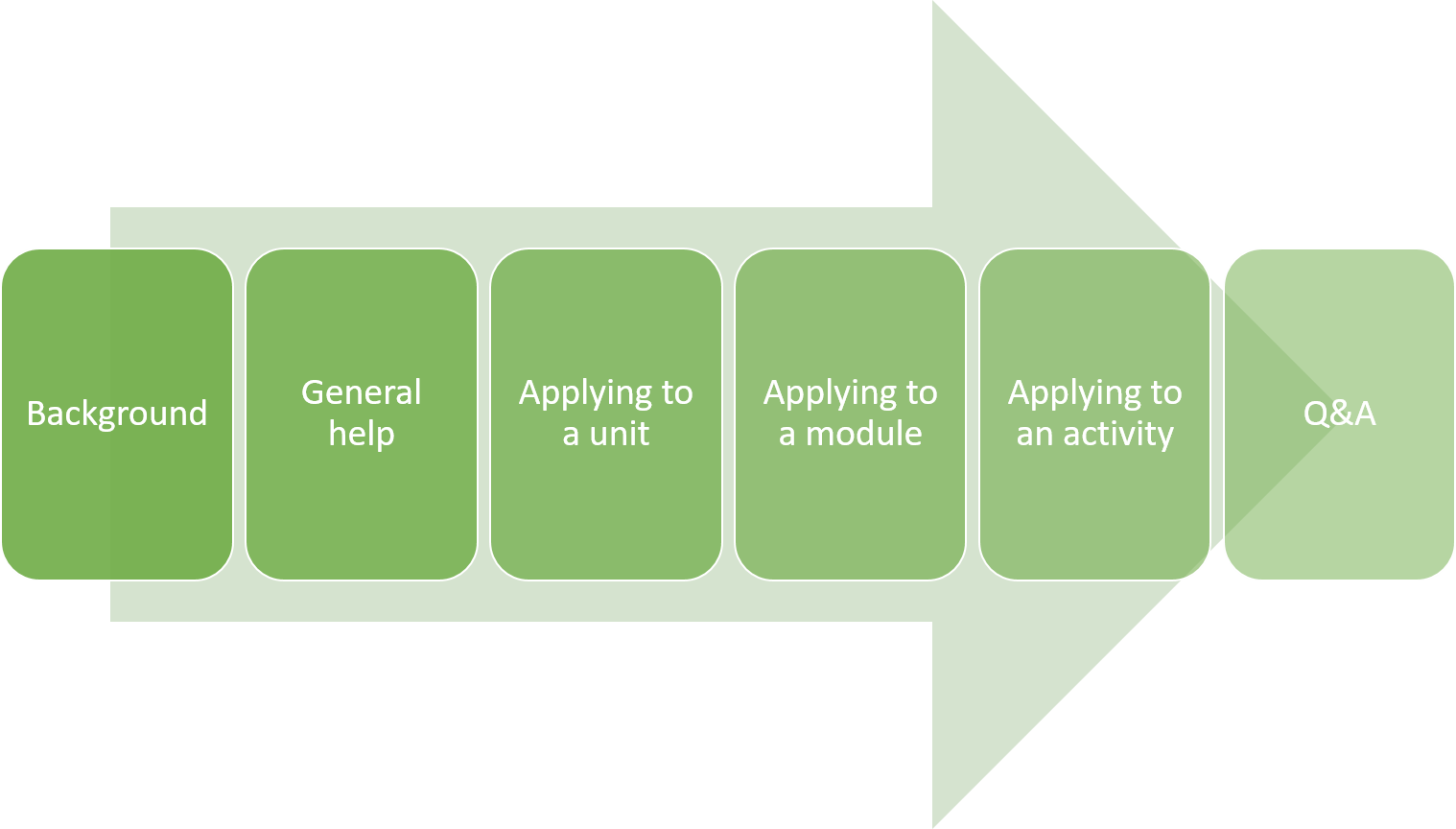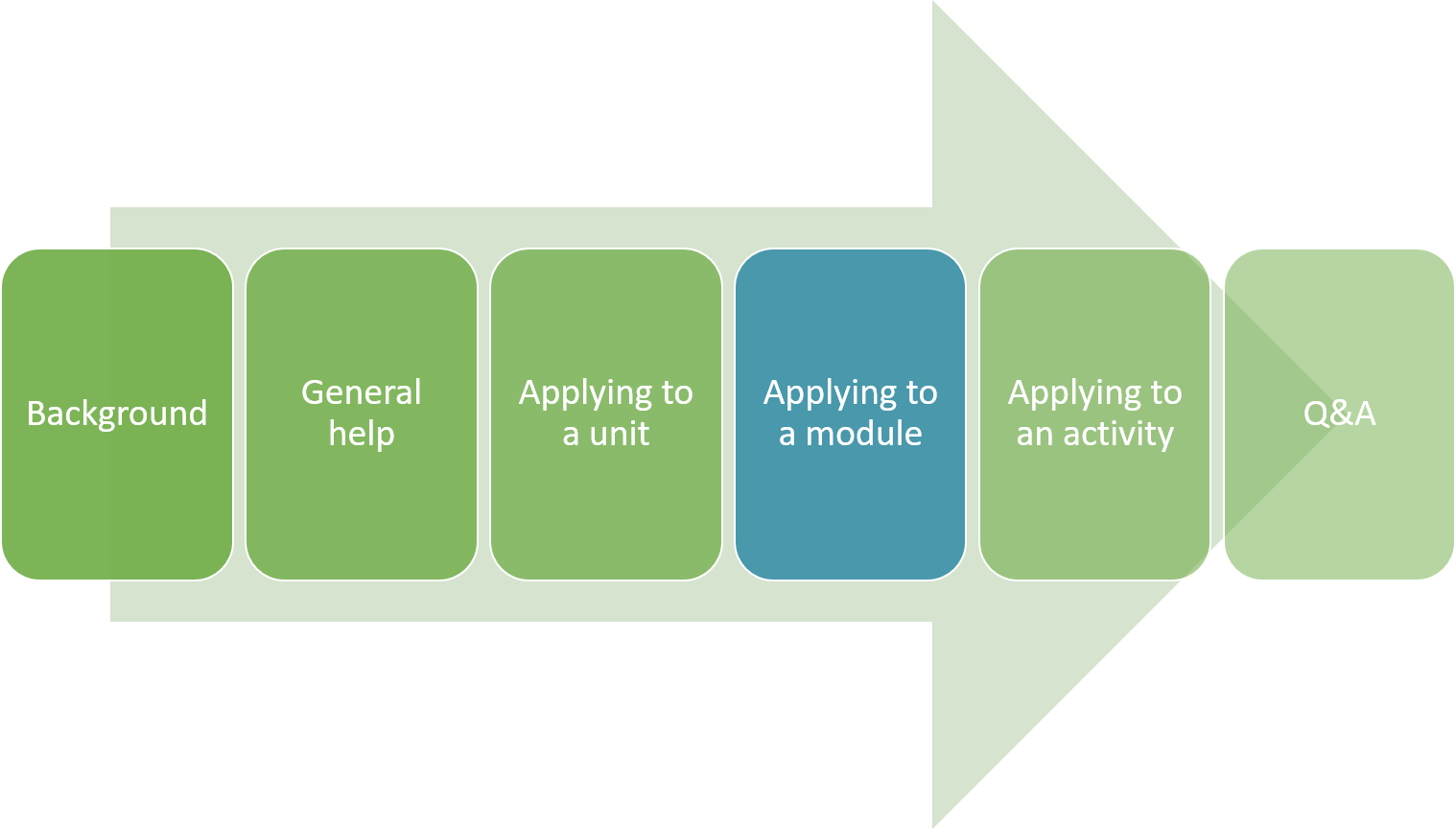Applying to a unit
Practical strategies and techniques to assist teaching a unit include:
Unit signposting
The images below demonstrate how Raina applied cognitive load theory (CLT) to segment her webinar presentation. As Raina worked through the presentation, the image reappeared on the screen so participants could see where they were located within the presentation as highlighted by the blue box.
You can use similar signposting in a unit to show students where they are located within the unit.
Spreading concepts over a unit
Aim to carefully start with fewer concepts in the first unit modules (1, 2, 3) to ensure student understanding and to avoid overloading. Then increase the number of concepts in the later modules (4, 5, 6).
This is not the same as the amount of work; it is the amount of concepts covered, with fewer concepts introduced in the beginning modules. Those initial concepts are building the schemas students will need for the later modules.
If you build concepts strongly in the first couple of modules, students will become comfortable with the concepts and will then able to build on these as new concepts are introduced .
The image below shows how the number of concepts can be introduced over a SC Model unit:
- The blue columns show how we would normally spread the number of concepts over a unit - equally over all modules.
- The orange columns show how when applying cognitive load theory (CLT) the number of concepts are fewer at the unit start, then increase as the module continues.
When teaching a unit, it was observed many times that students who understood the concepts in the first couple of modules through repetition, lots of practise, and lots of activities went on to better understand the unit content and were then able to build on the concepts delivered in the later modules.
How do higher order learning skills fit in with cognitive load?
Students need schemas to build upon before they can perform higher order skills. The repetition of concept activities should be strong in the first couple of modules for students to build their tools/schemas to then be able to think more critically near the end of a unit.
This repetition consolidates those schemas to make sure that these skills become automated and easier for students. Then students can step back and start using their higher order thinking skills.

